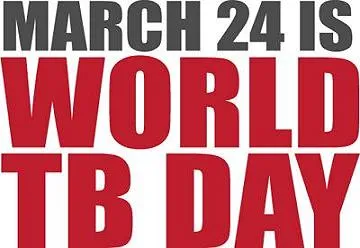World TB Day - The Union and the World Diabetes Foundation call for greater awareness of TB-diabetes co-epidemic

23 March 2012 / Paris – Close to 366 million people worldwide are at increased risk for developing active tuberculosis (TB) disease – and they may not know it. They are part of the rapidly growing population with diabetes mellitus (DM), which is expected to reach 552 million by 2030. This link between DM and TB threatens public health efforts, according to The International Union Against Tuberculosis and Lung Disease (The Union) and the World Diabetes Foundation, who are calling for greater awareness of this new co-epidemic on World TB Day, 24 March 2012.
Global data show that diabetics have a two-to-three times greater risk of developing TB than non-diabetics, and the risk of adverse outcomes in the treatment of both diseases also increases.
“Like the HIV/AIDS epidemic, the diabetes epidemic threatens to cause an escalation in TB incidence and complicates the management of both diseases”, says Prof Anthony D Harries, who is the Senior Advisor to The Union leading its work on TB-DM.
“In low- and middle-income countries of the world, about one-third of patients with tuberculosis and one half of those with diabetes mellitus live with their diseases undiagnosed and therefore untreated”, says Prof Harries.
In 2008, The Union began actively looking at ways to apply its successful tuberculosis control model – widely known as DOTS – and develop interventions to reduce this dual burden of disease, which is especially problematic for limited-resource settings.
The World Health Organization (WHO), The Union and the World Diabetes Foundation began collaborating on a response to diabetes-associated tuberculosis in 2009.
The WHO/Union Collaborative Framework for Care and Control of TB and Diabetes published in 2011 offers a guide to the establishment of programmes aimed at detecting and managing DM in TB patients and vice versa.
The World Diabetes Foundation also approved a grant to The Union to support bi-directional screening of patients with TB and DM in China and India, two of the countries with the heaviest burden of both diseases. The goal is to make earlier diagnoses, which in turn may lead to better treatment outcomes and disease control.
“Like tuberculosis, diabetes is a disease that can have devastating consequences among the poor, and today eighty percent of the cases are found in low- and middle-income countries”, says Dr Anil Kapur, Managing Director of the World Diabetes Foundation. “Without effective action to identify the patients affected, we will see more disability and death from diabetes as well as more TB deaths”.
Through the WDF grant, The Union worked with policy-makers and front-line staff in China and India to develop and implement screening procedures, as well as plans for how to monitor progress and report on outcomes and indicators. Since July 2011, The Union and those working at 10 pilot hospitals and clinics have been testing the screening procedures on the ground.
According to Prof Harries, “Joint integrated screening for both diseases in China and India is demonstrating that active screening can identify these diseases and allow afflicted people to access the care and treatment they need”..
Diabetes challenges
• 366 million people have diabetes in 2011; by 2030 this will have risen to 552 million.
• The number of people with type 2 diabetes is increasing in every country.
• 80% of people with diabetes live in low- and middle-income countries.
• The greatest number of people with diabetes are between 40 to 59 years of age.
• 183 million people (50%) with diabetes are undiagnosed.
• Diabetes caused 4.6 million deaths in 2011.
• Diabetes caused at least USD 465 billion dollars in healthcare expenditures in 2011; 11% of total healthcare expenditures in adults (20-79 years).
• Diabetes increases the risk of tuberculosis by a factor of 2-3.
Source: Diabetes Atlas, 5th ed
About The Union
The mission of the International Union Against Tuberculosis and Lung Disease (The Union) is to bring innovation, expertise, solutions and support to address health challenges in low- and middle-income populations. With nearly 10,000 members and subscribers from 150 countries, The Union has its headquarters in Paris and offices serving the Africa, Asia Pacific, Europe, Latin America, Middle East, North America and South-East Asia regions. Its scientific departments focus on tuberculosis and HIV, lung health and non-communicable diseases, tobacco control and research. Learn more at www.theunion.org.
About the World Diabetes Foundation
The World Diabetes Foundation has to date funded 279 projects in 100 countries with a total project portfolio of USD 261.2 million, of which USD 86.9 million has been donated by the Foundation. The establishment of the World Diabetes Foundation was announced by its founding father, Novo Nordisk A/S, on World Diabetes Day 2001. The Foundation was legally established in February 2002. A donation programme has been allocated by the founding company of a total maximum of DKK 1.1 billion in the period 2001-2017, (USD195 million).
The Foundation is registered as an independent trust and governed by a board of six experts in the field of diabetes care, access to health and development assistance. For further information please visit our website: www.worlddiabetesfoundation.org
Contacts:
The Union :
Ms Nawel Saady Khelladi
+33 1 56 80 28 28
press@theunion.org World Diabetes Foundation :
Mr Jamal R Butt
+45 44 43 47 36
jmbu@worlddiabetesfoundation.org